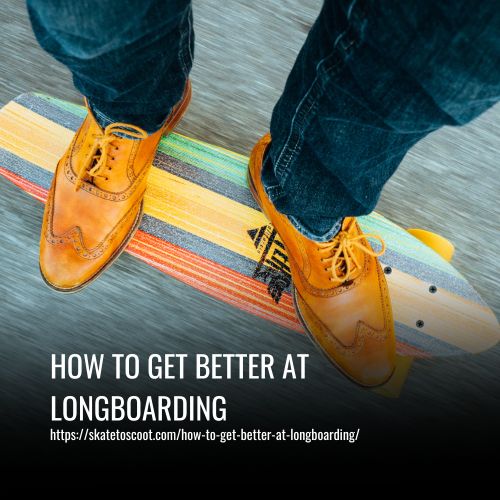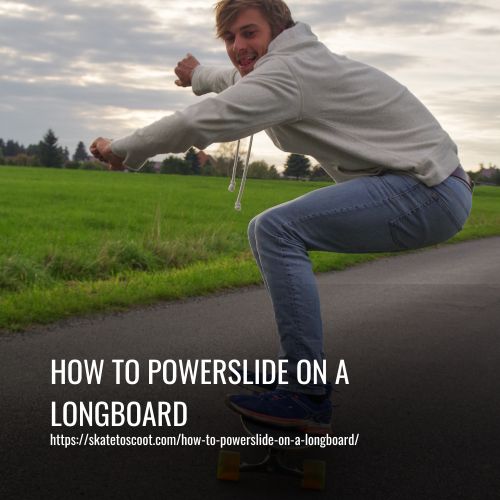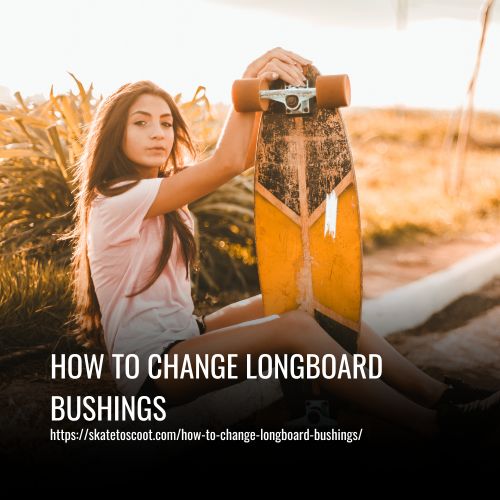As an Amazon Associate we earn from qualifying purchases.
Are you tired of watching longboarders effortlessly glide down the street while you struggle to keep your balance? If you’ve ever wanted to learn how to longboard like a pro, then this article is for you. Longboarding is a thrilling and exhilarating sport that can be enjoyed by people of all ages and skill levels. With a little practice and the right techniques, you can become a master of the longboard in no time.
So, what exactly is longboarding? It’s a popular form of skateboarding that involves riding a longer and wider board. Unlike traditional skateboarding, longboarding focuses more on cruising and carving rather than tricks and flips. Whether you’re looking for a fun way to commute or a new hobby to enjoy, learning how to longboard can open up a world of possibilities.
In this article, I’ll share some valuable tips and techniques to help you improve your longboarding skills. From finding the right board to mastering basic maneuvers, you’ll learn everything you need to know to become a confident and skilled longboarder. Get ready to hit the streets and experience the thrill of longboarding like never before.

How To Get Better at Longboarding
Longboarding is a thrilling and exhilarating sport that requires skill, balance, and practice. Whether you’re a beginner or an experienced rider looking to improve your longboarding abilities, there are a few key factors to consider. From mastering your foot position and understanding your riding style to using the right safety gear and practicing on different terrains, these guidelines will assist you in enhancing your longboarding skills and enjoying a smoother, more confident ride. So let’s dive in and discover how to take your longboarding journey to the next level!
1. Loosen Your Trucks
To get better at longboarding, one effective technique is to loosen your trucks. Although it may seem intimidating, loosening your trucks can greatly improve your overall performance. It is important, however, to start slow and not loosen your trucks excessively.
A good starting point is to loosen your front truck while leaving the back truck intact. This will allow for easier pumping and carving. By keeping the back truck tight, stability is maintained and quick turns become easier to execute. Loosening both the front and back trucks too much may result in the need to “tick-tack,” which involves lifting the front truck off the ground with each turn. This can make longboarding more challenging.
2. Swap Wheels
Swapping wheels on your longboard can greatly impact your riding experience. It is a simple and effective way to customize your board according to your preferences and the type of longboarding you enjoy.
One important factor to consider when swapping wheels is the durometer or hardness rating. Hard wheels, typically with a rating of 90A and above, are great for fast speeds and sliding. They provide less grip on the ground, which can make control more challenging, especially for beginners. However, if you enjoy high-speed cruising or freeride styles, hard wheels might be the right choice for you.
On the other hand, soft wheels, usually with a rating from 70A to 85A, are ideal for cruising and performing tricks at lower speeds. They offer a better grip on the ground, allowing for more control and stability. Soft wheels are commonly used for downhill riding, where safety and traction are crucial.
3. Practice Your Stance
To improve your longboarding skills, it’s crucial to practice and perfect your stance. Your stance determines how easily you can control your longboard and perform tricks. The ideal foot placement involves placing your back foot on or behind the back truck, and your front foot on or before the front truck.
A popular all-purpose foot placement position is to place your back foot on or near the tail, and your front foot an inch or two behind the front truck, angled slightly. This position allows for easy pumping, carving, pushing, and landing tricks. However, it’s important to note that stance and foot placement can vary depending on personal preference and the style of longboarding.
For example, downhill longboarders and longboard dancers often adopt a different foot placement. They may place one foot facing forward, with their back foot over the bolts and slightly arched. While this stance may not be suitable for cruising on the street, it provides better stability and control at higher speeds.
4. Find a Smooth Surface
To get better at longboarding, it’s important to find a smooth surface to practice on. The quality of the pavement can greatly affect your ability to improve your balance and technique. If you frequently ride on cracked and damaged pavement, it can be much more difficult to practice for longer durations.
One option is to visit a skatepark if there is one in your area. While I wouldn’t recommend attempting ramps or bowls as a beginner, skateparks often have smooth pavement that is perfect for learning how to roll and improve your skills.
In many cities, you can also find sidewalks with smooth pavement. However, keep in mind that there may be more obstacles like pedestrians, animals, and bicyclists to navigate. Once you get comfortable rolling on a smooth surface, you can gradually take your skills to rougher streets and sidewalks.
5. Practice in Grass
One effective way to improve your skills in longboarding is to practice in the grass. While you won’t be able to roll on the grass, it provides a great opportunity to work on your stance and shift your weight on the longboard. This is particularly beneficial for beginners or those who have recently switched to a new setup.
Practicing in the grass offers a safe environment as the softness of the grass can cushion any falls, minimizing the risk of injury compared to practicing on concrete. This is especially helpful if you are new to longboarding or trying out a new setup that you’re not accustomed to.
Consider finding a grassy area like a park or open field where you have enough space to practice. Focus on maintaining your balance and getting comfortable on the board. Gradually try riding down small grassy inclines to further develop your skills and understanding of how the board works.
6. Prepare to Fall
Falling is an inevitable part of longboarding, but it doesn’t have to lead to serious injuries if you know how to prepare for it. Here are some important tips to help you fall safely and minimize the risk of harm.
Firstly, never stick your hand out to brace the fall. This can easily result in wrist or hand injuries. Instead, tuck your elbows close to your body and protect your head. By doing so, you can reduce the chances of fracturing your wrist or fingers.
Investing in the right safety gear is crucial, especially for beginners. Make sure to wear longboarding gloves, knee pads, a helmet, and wrist guards. These protective measures will provide cushioning and support during falls, reducing the impact on your body.
It’s also wise to avoid riding at high speeds, especially as a beginner. Wipeouts at higher speeds tend to be more serious, so start by getting comfortable with cruising and gradually introduce tricks and higher speeds once you have gained more confidence and skills.
7. Change Your Scenery
To become a well-rounded longboarder, it’s important to ride in a variety of settings. Whether it’s a smooth sidewalk, a gravel path, or an asphalt road, each environment offers a different feeling and experience. By changing your scenery and riding in different places, you can improve your skills and become a more versatile rider.
Many longboarders prefer a particular setting or surface, such as a skatepark or a smooth sidewalk. While it’s great to have a favorite spot, it’s equally important to challenge yourself and ride in unfamiliar settings. By putting in as much time practicing in different environments as you would in your favorite spot, you can expand your skills and improve your overall longboarding abilities.
Riding in various settings can help you adapt to different terrains, develop better balance, and gain more control over your board. It also exposes you to different challenges and obstacles, which ultimately enhances your riding experience.
8. Practice Braking
Braking is an essential skill for any longboarder, and practicing different braking techniques can greatly improve your control and safety on the board. While foot-braking is the most common method for beginners, learning how to slide and stop can take your longboarding to the next level.
To practice sliding and stopping, start by shifting your weight to your back foot while rolling. Kick your back foot forward without taking it off the board, simultaneously shifting the weight of your front foot in the same direction. This motion will initiate a slide, allowing you to come to a controlled stop.
Mastering the slide and stop technique requires practice and patience. Start on a smooth surface with plenty of open space to minimize the risk of injury. As you become more comfortable, gradually increase your speed and experiment with different sliding angles and body movements.
9. Learn Tricks
To become a better longboarder, learning tricks can greatly enhance your skills and make you more well-rounded. While you can still be a great longboarder without tricks, adding tricks to your repertoire adds a new level of excitement and challenge to your longboarding journey.
Start with simple tricks like the no-comply, which involves popping the tail of your board with one foot while jumping and landing back on the board. This trick can be easily mastered and will serve as a foundation for other tricks.
Once you feel comfortable with the no-comply, try the circus flip. This trick is a variation of the no-comply and requires landing with both feet while simultaneously flipping the board.
Tips and Tricks on Longboarding Skills:
Longboarding is a fun and exciting sport that requires practice and skill development. Whether you’re a beginner or an experienced rider looking to enhance your longboarding abilities, these tips and tricks will help you become a better longboarder.
- Choose the right board for your skill level and riding style: Consider the different types of longboards available, such as cruising, downhill, or freestyle boards. Select a board that suits your experience level and preferred style of longboarding.
- Practice balance exercises: Good balance is essential for longboarding. Practice maintaining your balance on a flat surface or use a longboard to work on your balance skills.
- Learn to push properly: Pushing is a fundamental skill in longboarding. Place one foot on the board and use the other foot to push off the ground, gradually increasing your speed and distance.
- Develop your turning technique: Mastering turns is crucial in longboarding. Practice shifting your body weight and applying pressure on your toes and heels while turning. Start with flat turns before attempting more complex maneuvers.
- Carve for smoother transitions: Carving is a technique that allows you to smoothly transition from one turn to another without changing your speed. Practice bending your body weight and maintaining control during carves.
- Join a longboarding community: Surround yourself with experienced riders who can provide guidance and share their knowledge. Joining a longboarding community can enhance your skills and give you access to valuable tips and resources.
- Stay motivated: Longboarding can be challenging, but it’s also a lot of fun. Stay motivated by setting goals, celebrating your successes, and continuously pushing yourself to improve.
- Practice regularly: Consistent practice is essential for improving your longboarding skills. Create a practice schedule and dedicate time to honing your abilities.
- Gain basic knowledge: Educate yourself about longboarding and learn the basic tips and techniques before attempting more complicated maneuvers.
- Experiment with different terrains: Practice on different types of terrain, such as hills, flats, or uneven ground. This will improve your overall skill and adaptability as a longboarder.
- Invest in quality safety gear: Always prioritize safety when longboarding. Purchase a helmet, knee pads, and elbow pads to protect yourself from potential injuries.
- Find your comfortable stance: Experiment with different foot positions to find a stance that allows you to control the longboard effectively. Determine whether a regular or goofy stance suits you best for optimal control and balance.
- Start with smaller challenges: Begin with small hills or walls and gradually progress to more challenging routes. This approach helps build confidence and strength on the longboard.
- Balance your weight: Proper weight distribution is crucial when riding a longboard. Control your body balance and make sure to monitor your direction through foot and body movements.
- Train at home on bad weather days: Use bad weather or off-season days to train indoors and maintain physical activity. Stretching, exercising, and using a balance board can help improve flexibility, reduce the risk of injury, and enhance your longboarding skills.
By following these tips and tricks, you can improve your longboarding skills and enhance your overall longboarding experience. Remember to always prioritize safety and practice regularly to become a skilled and confident longboarder.
FAQs
No, longboarding is suitable for both beginners and experienced riders. It offers a wide range of styles and disciplines, such as cruising, downhill riding, freestyle, and freeriding, allowing riders of all skill levels to find their niche.
Beginners should start with a cruising board, also known as a complete board. These boards offer stability, control, and a smoother ride, making it easier for beginners to grasp the basics of longboarding.
While regular skateboards can be used for short-distance travel, they are not optimized for longboarding. Longboards are specifically designed with larger decks, softer wheels, and trucks that provide stability and control for longer rides.
There are several ways to stop or slow down on a longboard, including foot braking, slide braking, and using downhill techniques such as speed control through carving. Beginners should start with foot braking, where you drag your foot on the ground to gradually reduce speed.
Safety is paramount in longboarding. Beginner riders and experienced riders should always wear a helmet, knee pads, elbow pads, and slide gloves. These protective gear items minimize the risk of injuries such as road rash and provide crucial protection during falls.
Speed wobbles can occur when riding downhill at high speeds. To prevent speed wobbles, make sure your setup is stable and well-adjusted. Develop a relaxed and balanced riding style, and gradually increase your speed as you gain experience and confidence.
Improving balance on a longboard takes practice. Start with basic exercises on flat ground to develop your core strength and stability. Engage in balance training activities like yoga or using a balance board to enhance your skills.
Conclusion:
Learning how to get better at longboarding is all about practice, perseverance, and pushing yourself outside of your comfort zone. So, grab your board, hit the pavement, and embrace the thrill of the ride. Remember, with each new challenge and every exhilarating trick, you’ll not only improve your skills but also unlock a world of endless possibilities.
So, keep pushing, keep shredding, and keep chasing that feeling of pure freedom on your longboard. Ride on!
Amazon and the Amazon logo are trademarks of Amazon.com, Inc, or its affiliates.



